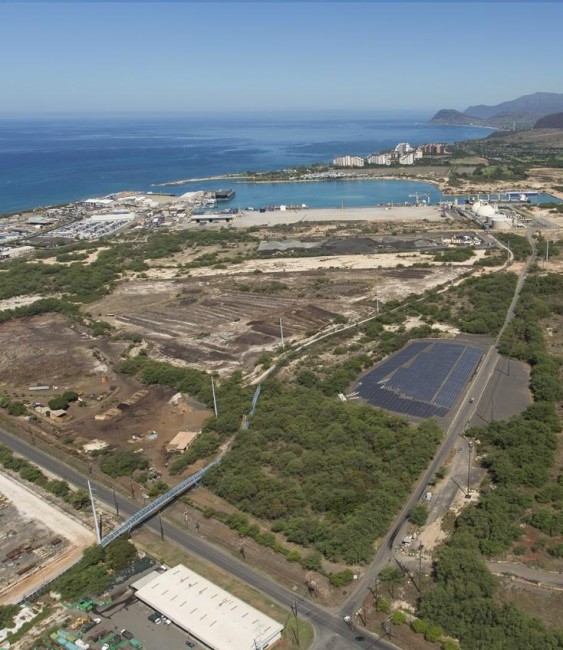Online Map Identifies Contaminated Land With Potential for Renewable Energy Development
Ashley Mizuo
Hawaii Public Radio

PHOTO COURTESY OF JAMES CAMPBELL COMPANY LLC
The Hawaii Energy Office and state Department of Health have created an online map that identifies contaminated lands that officials hope developers can turn into renewable energy sites.
The Hawaii Brightfields Initiative grew out of the U.S. Environmental Protection Agency’s brownfield program that aims to clean up contaminated sites. The state program takes it a step farther, encouraging redevelopment of the land for purposes such as renewable energy.
The state health and energy departments hope that interested parties can use the mapped data to build clean energy projects on difficult-to-develop properties.
“The objective is to encourage the reuse of previously developed, disturbed or contaminated lands because they can be more development ready and that can preserve untouched lands in Hawaii,” said Maria Tome, Hawaii Energy Office renewable energy program manager.
Peter Rosegg, Hawaiian Electric Co. senior spokesman, said the program can extend land use.
"With land for renewable energy projects in these islands both scarce and expensive, especially on O‘ahu, we must use all that is available," he said. "Some solar projects are already built on ‘brownfield’ sites. Done properly, with proper safeguards, this is a promising alternative to explore.”
Tome said the program can also help address health concerns with the properties.
“Once you’ve found a parcel that you think, 'Hey, this would be an excellent location for this project,' you have incentives to go clean it up,” she says. “If there is contamination that has not yet been cleaned up, all of a sudden, you have someone who is interested in addressing that problem.”
Kapolei Sustainable Energy Park is an example of a project that took contaminated property and converted it into a solar energy development.
James Campbell Co. LLC owned a parcel of land that was once a hazardous materials dumping site, said Steve Kelly, president of the Kapolei Properties Division. In the 1990s, the EPA capped the site with asphalt.
“There was really no practical use for that property,” he said. “When solar became more of a common thing, we put the pieces together and figured that that was an appropriate use.”
The 1.2MW solar project was built on the lot in 2011, although not without some challenges.
While building a fence around the property, the company found more contaminated areas not covered by the asphalt cap. The company had to go back to the EPA and the state health officials to cap the uncovered area.
“It wasn’t an inordinate amount of problems that we encountered,” Kelly said. “It was just making sure the necessary clearances were in place at both the federal and state levels.”
Tome noted that the state map is meant as a first step in the development process.
“It’s a first cut to try to narrow down what land might have what attributes,” she said. “You’re not making a final decision.”
Federal grants are available to help those interested in developing the contaminated areas for renewable energy programs. Applications are due by Dec. 3. More information is available on EPA's website.
